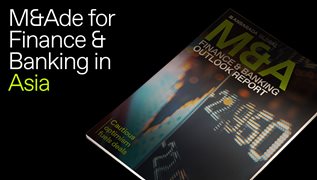Getting procurement right: The foundation of successful infrastructure delivery
EY Partner Tom Carey shares insights on how strategic procurement approaches can transform transport infrastructure outcomes
By AnsaradaWed May 28 2025Industry news and trends, Innovation, Tenders

In this excerpt from our 2025 Transport Infrastructure Outlook Report, developed in partnership with Infralogic, Tom Carey, Partner, Infrastructure and Capital Projects at EY Ireland explores how smarter procurement strategies are reshaping the transport infrastructure landscape and driving better project outcomes.
What is critical to successful infrastructure procurement?
Procurement has become one of the most important factors in successful project delivery, particularly over the past five years. Many delays and cost overruns can be traced back to poor procurement or contracting strategies.
The key is to get the commercial, regulatory, and risk elements right from the start. By ensuring these fundamentals are addressed, projects can achieve better value for money and avoid the pitfalls that often derail infrastructure delivery.
How can risk allocation be improved in transport infrastructure projects?
Risk allocation is about finding the right balance. A collaborative approach between clients and contractors is essential to avoid misalignment. One way to improve outcomes is by fostering earlier market engagement, which allows contractors to help shape the procurement process. When contractors are involved in defining risks upfront, the process becomes more realistic and sustainable.
Another challenge is ensuring risks are appropriately shared rather than offloaded entirely, which can alienate the market and lead to limited participation. Flexibility and communication are critical to striking this balance.
How can procurement strategies improve competition and value for money?
It’s about packaging the work appropriately. Bundling projects into turnkey solutions can simplify interface management but often deter smaller or specialist bidders, sometimes reducing competition.
Disaggregating work into smaller packages can attract expertise in specific areas, increasing competitive tension and potentially improve value for money. However, this requires careful interface planning and risk management to coordinate effectively and prevent delays or overruns.
What role do digital tools play in procurement?
Digital tools are essential to streamlining procurement processes, ensuring transparency, and reducing inefficiencies. Many existing systems rely on outdated methods like spreadsheets and emails, which are error-prone and slow.
Digital platforms centralize workflows, improve compliance, and provide robust auditability. Adoption has been slower in some regions, but as workloads increase and complexity grows, these tools will become indispensable for managing infrastructure projects.
What’s next for procurement technology?
The future lies in integrating AI and automation to handle repetitive administrative tasks, freeing up procurement teams to focus on strategic decision-making. While adoption will take time, especially in the public sector, the need for scalable, efficient solutions is clear. As complexity in infrastructure grows, digital innovation will be critical to meeting future demands.


